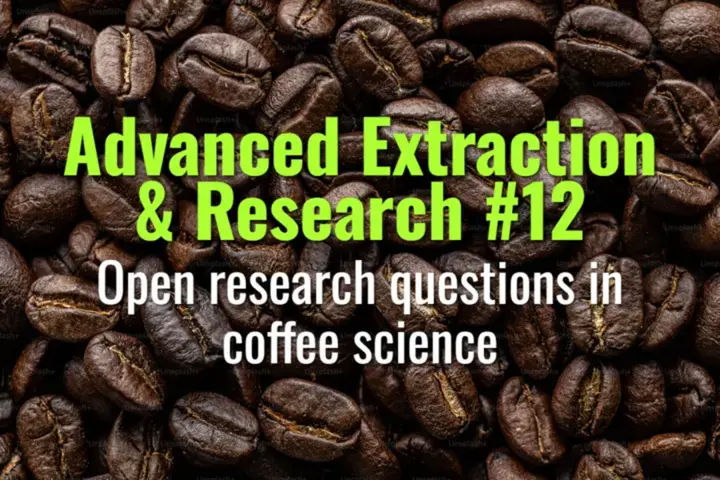Open research questions in coffee science
The unresolved questions in coffee science that researchers, baristas, and roasters continue to explore—spanning physics, chemistry, and sensory analysis.
- Coffee Basics Nerds
- 2 min read
Article 12 of 12 in Advanced Extraction & Research/

Physics of Extraction
- How exactly do fines migration and channeling evolve dynamically within a puck?
- Can we create predictive hydraulic resistance models that reliably forecast flow behavior across grind sizes and brew methods?
- What are the precise relationships between bed depth, pressure, and flow stability in espresso?
Chemistry of Coffee
- Which volatile and non-volatile compounds are most responsible for signature sensory attributes (e.g., fruitiness, florals)?
- How does green coffee aging specifically alter compounds that drive acidity and sweetness?
- Can we model Maillard reactions during roasting with more precision to link chemistry to sensory outcomes?
Sensory Science
- How reliable are current cupping protocols for detecting small sensory differences?
- Can we reduce taster bias with new blinding or statistical tools?
- How do individual genetics and perception thresholds affect coffee flavor evaluation?
Water & Solubility Questions
- How do water chemistry variations across regions influence extraction reproducibility?
- Can remineralization recipes be optimized for specific origins or roast levels?
- What’s the exact role of osmotic vs diffusive extraction under different pressures?
Brewing Technology
- Can real-time sensors (TDS, pH, pressure) be integrated into machines for adaptive brewing?
- What role will AI-driven recipe optimization play in cafés and research labs?
Sustainability & Social Science
- What are the long-term impacts of climate change on terroir expression?
- How do processing innovations (anaerobic, carbonic maceration) translate across different cultivars?
- What is the most effective way to ensure traceability and farmer equity while scaling global supply chains?
Summary
Coffee science is still full of open research questions spanning extraction physics, chemistry, sensory evaluation, water science, and sustainability. Progress requires cross-disciplinary collaboration between baristas, roasters, chemists, engineers, and farmers—ensuring the future of coffee is both better understood and more sustainable.
- Tags:
- Green Coffee
- Summary Coffee
- Climate Change
- Coffee Flavor
- Acidity Sweetness
- Sensory Evaluation
- Water Chemistry
- Roast Levels
- Maillard Reactions
- Sensory Outcomes
- Terroir Expression
- Fines Migration
- Baristas Roasters
- Bed Depth
- Pressure Flow
- Supply Chains
- Brew Methods
- Future Coffee
- Grind Sizes
- Flow Stability
- Sensory Attributes